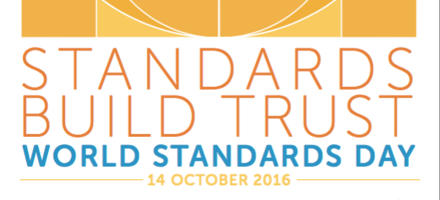
Rating quality
Progress indicator

Ratings systems could change the way we view quality standards and the role that organisations, such as ISO, play in quality certification.
It’s natural for consumers to want the crème de la crème of what they are investing in and thus no surprise that modern society has become obsessed and dependent on ratings and reviews to help determine where, and what, to spend their money on. From e-commerce to social media, services and products are constantly rated by users and consumers have always perceived other customers’ reviews as a reliable source for assuring the quality of a potential acquisition. Nowadays, the internet has facilitated this rating culture’s expansion, which could bring new implications for the quality sector.
Currently, quality professionals rely on third-party assurance; but as technology life cycles become shorter, approaches to providing assurance need to adapt.
“I’ve been thinking about what the third-party assurance landscape is going to look like in say five or ten years’ time, and one has to consider factors such as the ongoing evolution of the internet, the potential impact of technologies such as distributed ledgers and blockchain and online customer reviewing tools and social media,” Gary Pogson, Lead Technical Specialist at Lloyd’s Register Foundation, said. “The rapid pace of technology change means that we need to continue to evolve our approach to providing assurance for those technologies.
“When an organisation’s quality management system is ISO 9001 certified it provides a level of confidence in that organisations ability to deliver products or services that meet the needs and expectations of their customers. Now, customer feedback mechanisms such as Feefo or eBay ratings can also provide some level of confidence that the product or service has met customers’ expectations.”
"The rapid pace of technology change means that we need to continue to evolve our approach to providing assurance for those technologies."
Keeping up with fast-paced changes in the work environment, particularly technology related ones, can be a challenge for established organisations such as ISO; however, Pogson clarifies: “I don’t believe that globally recognised standards, such as those of ISO, will disappear, but I think that the frameworks for providing product and service assurance need to adapt in order to take best advantage of the rapidly changing technological landscape. New technologies such as distributed ledgers and blockchain, which could arguably provide for additional layers of confidence in engaging a wider stakeholder community are a way of helping to tackle that challenge.”
Nonetheless, Pogson agrees that having an ISO certification “provides confidence to the industry that you’re doing things in a certain way in order to meet customers’ requirements.”
He adds: “There are a number of reasons why organisations go to third parties to provide assurance over their products and services. It might be regulatory requirements, a reputational need, or because they don’t have the skills internally to manage all of the types of risks that might affect their business.”
This need for third party assurance will not disappear completely in the near future, but the certification procedure might change and become less centralised. The ratings culture allows everyone to have a voice, which means the power to influence is constantly shifting.
Rating systems are part of the new digital world. The so-called sharing economy requires trust to function, and that trust is based on users’ ratings. The ratings culture can facilitate processes, but it can also compromise them. Established certification bodies have procedures in place to assess products and services’ quality, which regular people are not aware of or are not able to fully comply with, when rating the quality of a product or service. Hence, despite their allure, rankings should be taken in with caution.
Quality World

Get the latest news, interviews and features on quality in our industry leading magazine.

